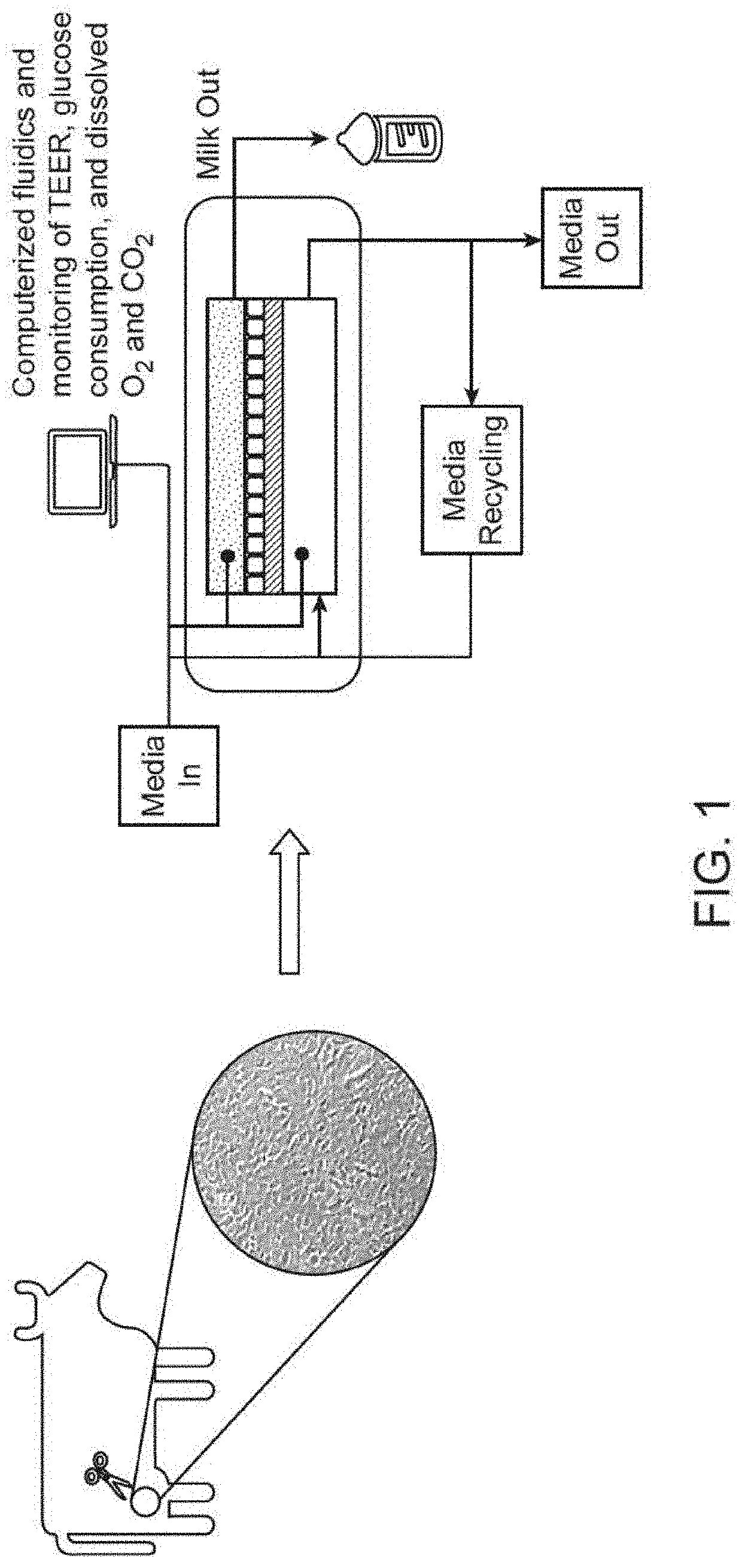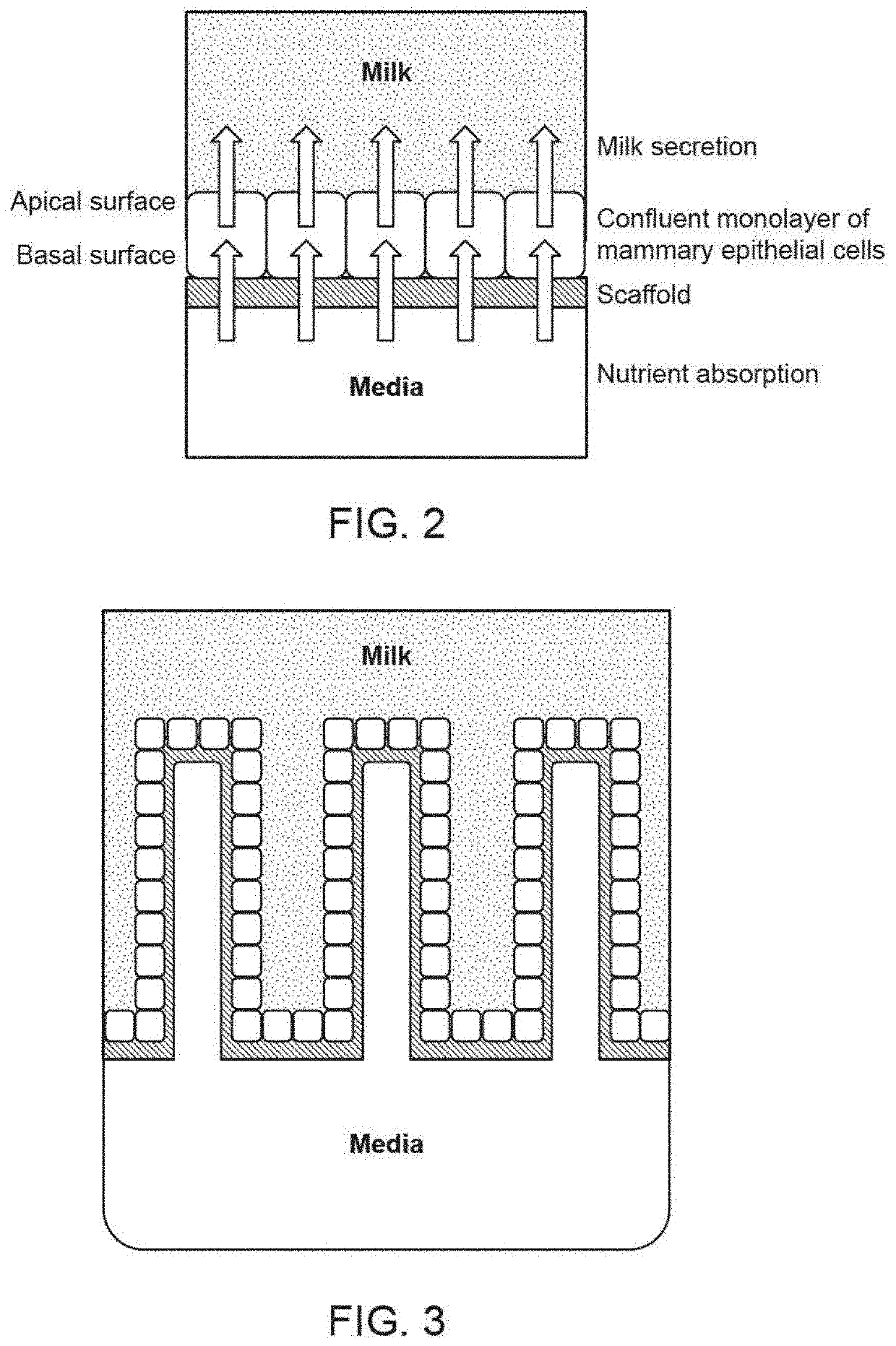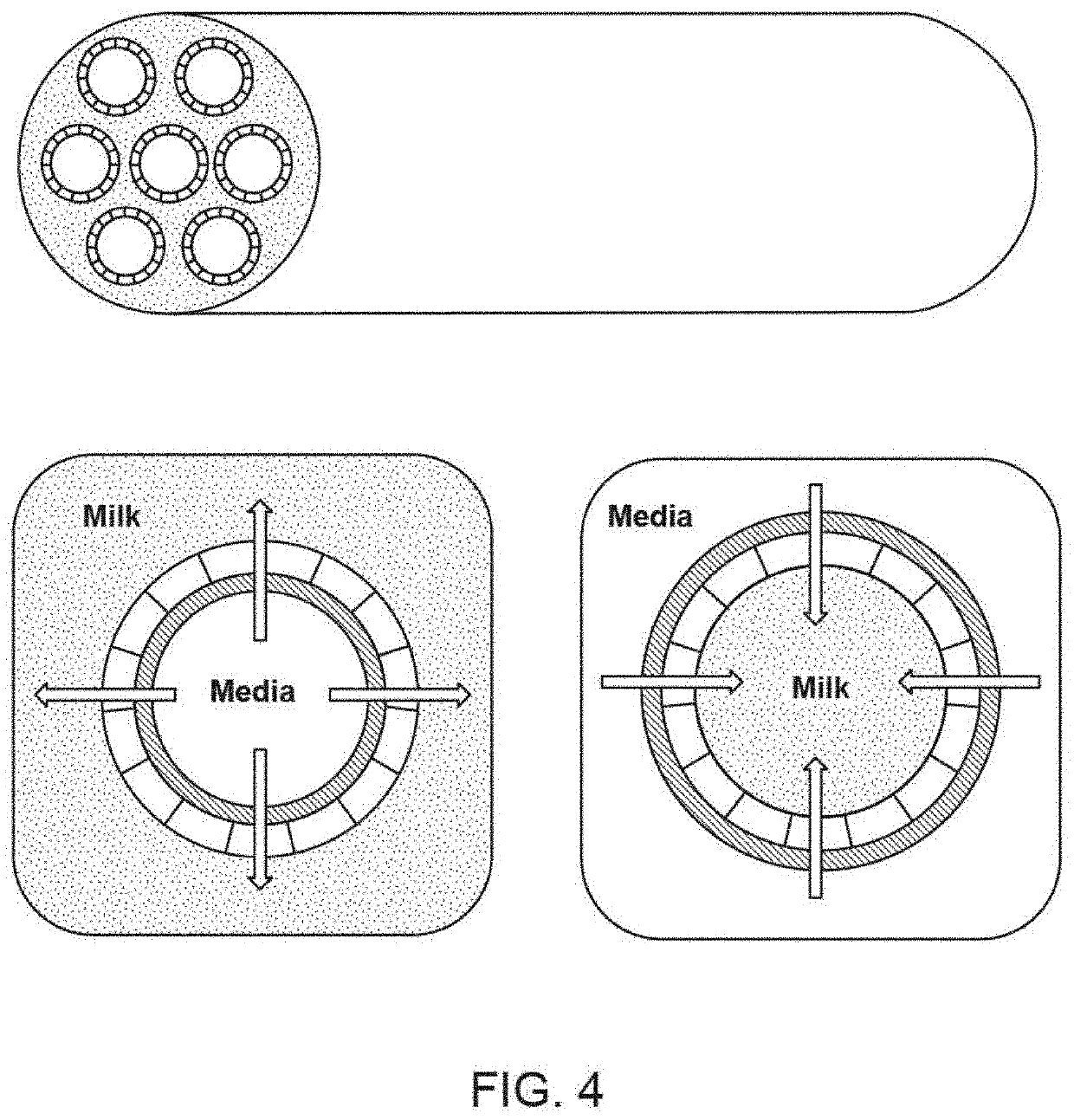Milk product compositions
a technology of product composition and composition, applied in the field of milk product composition, can solve the problem of not being able to reproduce the full molecular profile of milk or dairy
- Summary
- Abstract
- Description
- Claims
- Application Information
AI Technical Summary
Benefits of technology
Problems solved by technology
Method used
Image
Examples
example 1
n of Milk Components from Human Mammary Epithelium
[0219]In this example, human mammary epithelium is recapitulated and milk is produced in vitro. The system and process described is exemplary and can be scaled to produce multiliter volumes of milk components. Mammary epithelial cells are expected to form a polarized monolayer on bioreactor fibers that have been precoated with one or more of laminin and collagen or other extracellular matrix proteins, as well as on uncoated fibers. When confluent, the monolayer forms a barrier that divides the intra- and extracapillary space (ECS), with the basal surface attached to the fibers and the apical surface oriented toward the ECS. Milk component production is stimulated by addition of prolactin to the media. The secreted milk components are collected from the ECS and submitted for downstream analyses of the protein, lipid, and carbohydrate content in comparison to human breast milk produced in vivo.
[0220]Materials for use in this Example ar...
example 2
[0233]A cell culture system designed for the collection of milk should support compartmentalized secretion of the product such that the milk is not exposed to the media that provides nutrients to the cells. In the body, milk-producing epithelial cells line the interior surface of the mammary gland as a continuous monolayer. The monolayer is oriented such that the basal surface is attached to an underlying basement membrane, while milk is secreted from the apical surface and stored in the luminal compartment of the gland, or alveolus, until it is removed during milking or feeding. Tight junctions along the lateral surfaces of the cells ensure a barrier between the underlying tissues and the milk located in the alveolar compartment. Therefore, in vivo, the tissue of the mammary gland is arranged such that milk secretion is compartmentalized, with the mammary epithelial cells themselves establishing the interface and maintaining the directional absorption of nutrients and secretion of ...
example 3
ring Milk Compositions Comprising Immunoglobins
[0245]Primary mammary tissue is collected from a healthy donor. CD20+ immune cells and mammary epithelial cell populations are sorted by FACS analysis using known markers for the myoepithelial and luminal epithelial cell populations. The isolated mammary cells and immune cells are immortalized prior to co-culture of the cells. The immortalized immune cells are co-cultured with immortalized isolated mammary epithelial cells in a hollow fiber bioreactor and grown to confluence. The culture is stimulated with prolactin to stimulate milk production. The secretory cell culture product comprising immunoglobulins, including secretory IgA is then harvested by a non-disruptive withdrawal mechanism.
PUM
 Login to View More
Login to View More Abstract
Description
Claims
Application Information
 Login to View More
Login to View More - R&D
- Intellectual Property
- Life Sciences
- Materials
- Tech Scout
- Unparalleled Data Quality
- Higher Quality Content
- 60% Fewer Hallucinations
Browse by: Latest US Patents, China's latest patents, Technical Efficacy Thesaurus, Application Domain, Technology Topic, Popular Technical Reports.
© 2025 PatSnap. All rights reserved.Legal|Privacy policy|Modern Slavery Act Transparency Statement|Sitemap|About US| Contact US: help@patsnap.com



